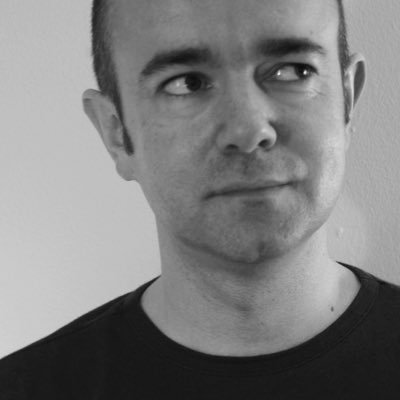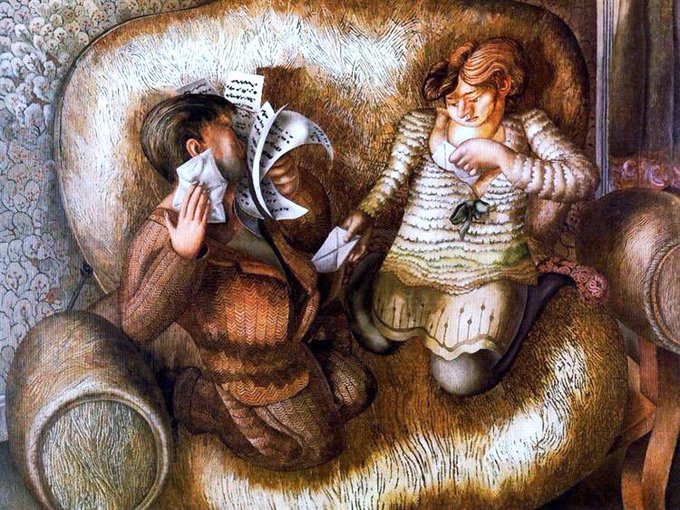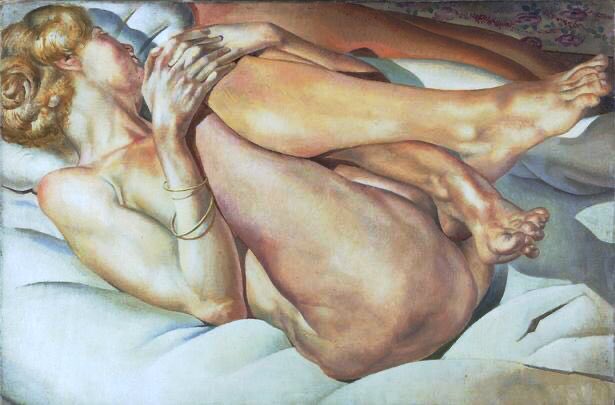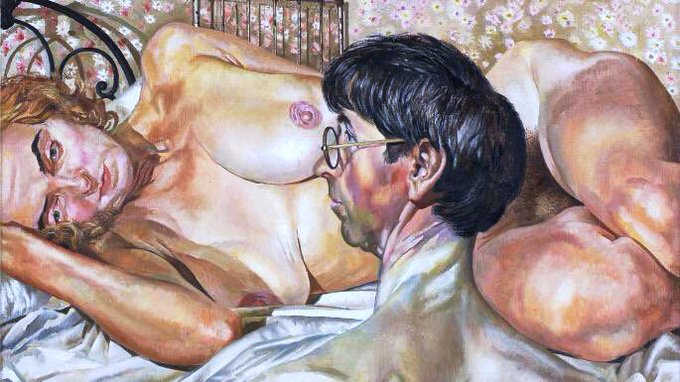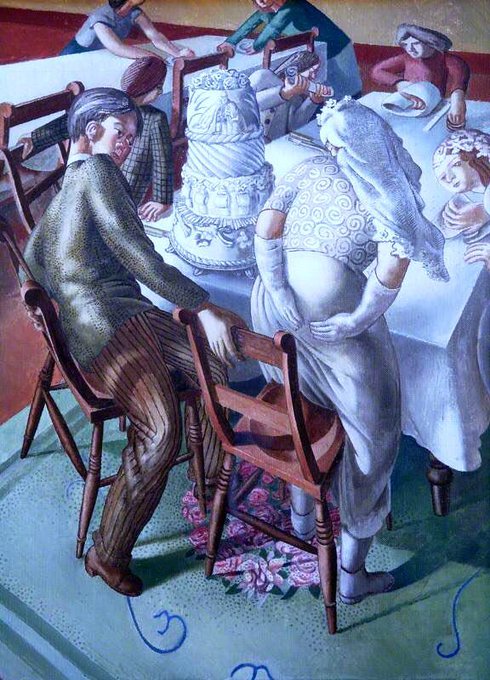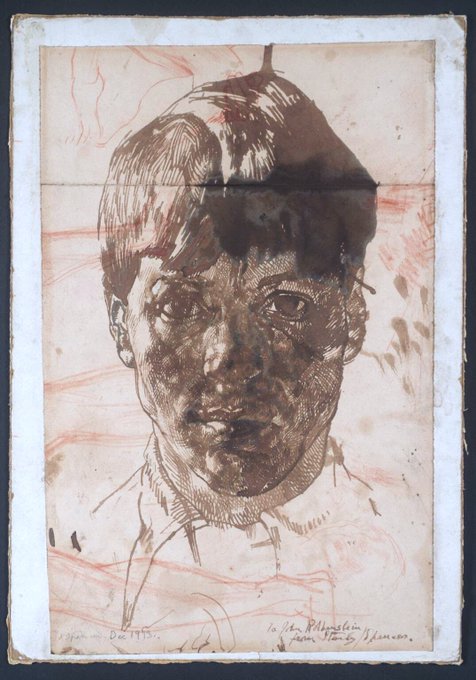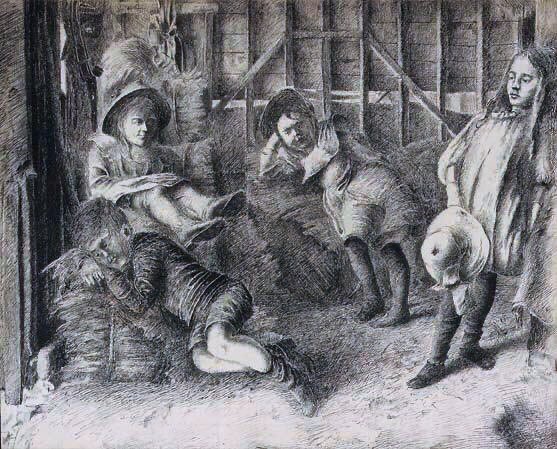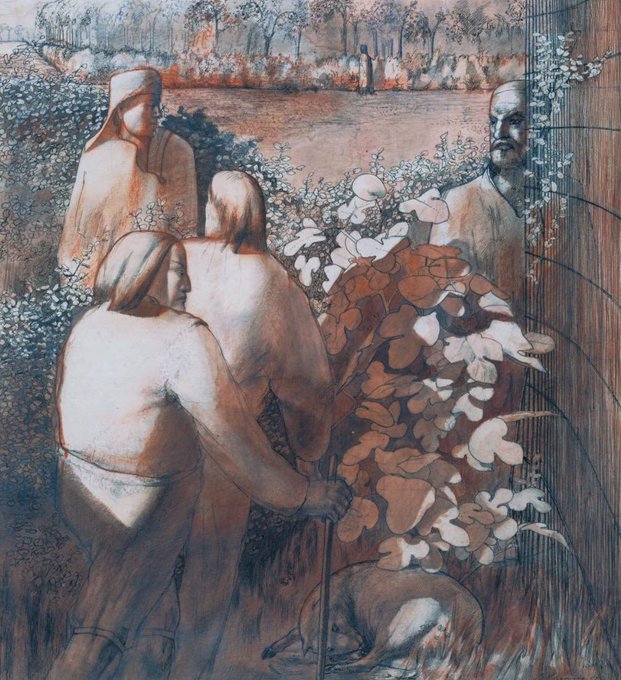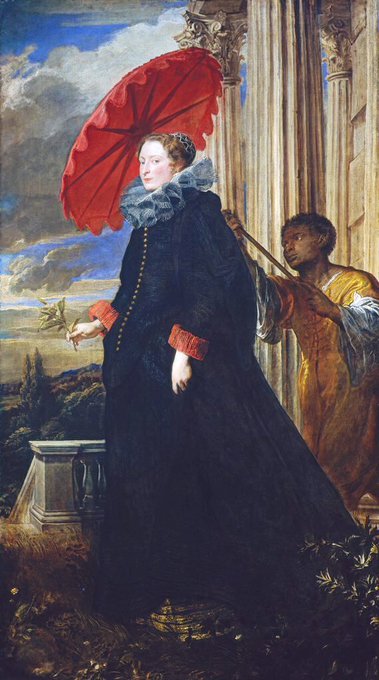In 1958 he was knighted. He got cancer in 1959 but still painted a striking self-portrait. He passed away at Cliveden. Self-portrait (1959), Sibyl Williams (1955), Marriage at Cana (1953) & Hilda & I at Pond Street (1954). A great artist worth seeking out.
In 1950 the minor artist Munnings reported his work to the police for obscenity based on drawings he found. He was not prosecuted & was awarded a CBE & asked to rejoin the RA. Love Letters (1950), Nude (1935-42) & Self-Portrait with Patricia Preece (1937)
Between 1945-50 he worked on his Resurrection Series. He also quit the RA as it refused to show some of his work. I really enjoy that he reimagined the biblical story with Cookham residents as the actors in the drama. It puzzled many conservatives at the time
Spencer wanted to build a House-Chapel celebrating his love affairs & beliefs & this gave rise to a number of fascinating & eccentric images over the years. Marriage at Cana (1953) & The Lovers (The Dustmen), 1934.
Spencer’s genius was to populate his religious images with locals & set them in Cookham landscapes. Self-portrait (1912), Zacharias & Elizabeth (1912-3), The Artist’s Left Hand (1913) & Fragments of a Self-Portrait (1913)
By 1912 he was already taking part in exhibits & had achieved considerable skill. His self-portrait (1914) is an early masterpiece of psychological study & originated from studies done in 1913. Apple-gatherers (1912-3), The Nativity (1912)
Born in Cookham, Berkshire, he had an unusual upbringing & trained at the Slade (1908-12). Despite access to a London life he would go home to Cookham as much as he could. Some early drawings of Cookham life & religious ideas (1908-12)
Irish readers can see one of Van Dyck’s celebrated Genoese portraits, the Red Boy @NGIreland & a homoerotic male nude study, for one of his St Sebastians. Some of his finest works are at @NationalGallery London including Charles I on Horseback (1637/8)
The triple portrait was created to give the great sculptor Bernini an idea of what the King looked like. Charles I (1635), Charles I in Three Positions (1635/6), William Fielding (1635/6) & Countess Clanbrassil (1636)
Van Dyck’s work lacks Ruben’s gymnastic dynamics but has a stately & elegant movement instead. Sir Robert Shirley (1622), Cardinal Bentivoglio (1623), Portrait of a Noblewoman (c1623) & Marchesa Elena Grimaldi (c1623)
